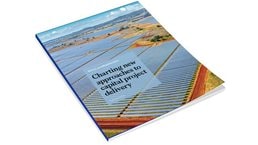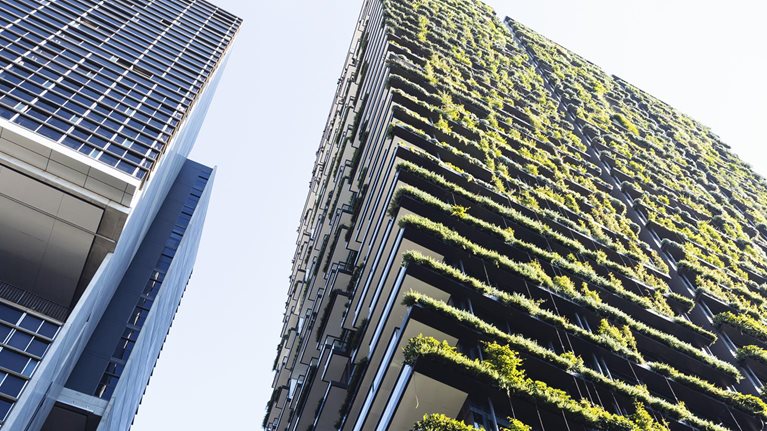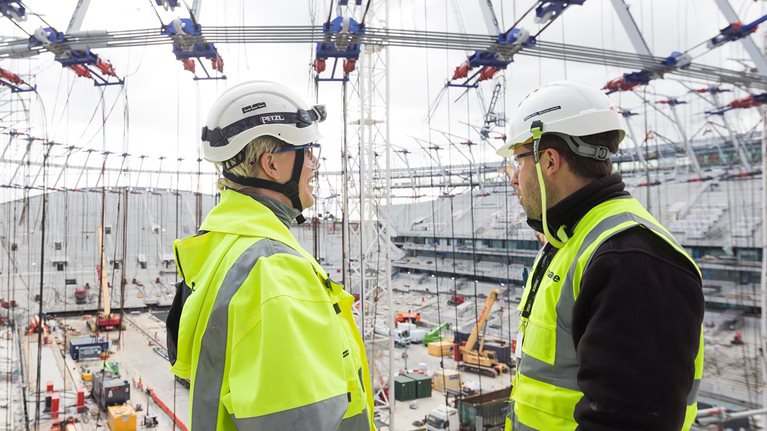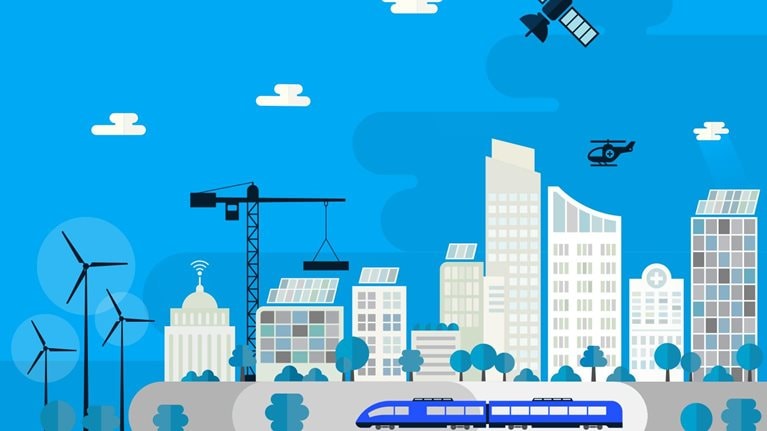An upgraded and expanded electric grid will be the backbone of the energy transition—and a requirement of any realistic decarbonization pathway. The investment needed to usher in the energy transition is staggering: according to the International Energy Agency, annual investments in energy sector infrastructure and technologies will need to increase from today’s level of more than $1 trillion to $4 trillion by 2030 to achieve net-zero emissions by 2050.1 This capital will go toward both traditional energy delivery assets, such as transmission and distribution grid upgrades, and new asset classes, such as renewables and storage.
The good news as 2022 dawns is that the funding is coming together: examples include the US Infrastructure Investment and Jobs Act (IIJA) and the cumulative $130 trillion commitment through the Glasgow Financial Alliance for Net Zero (GFANZ). And the technology we need exists. Utilities, developers, and engineering and construction firms must now turn their attention to building fast enough to keep pace.
Quantifying the speed of project acceleration
The successful integration and deployment of clean-energy investment will depend heavily on the availability of traditional, large-scale grid infrastructure—including transmission and distribution networks, switching stations, and transformers—as well as on enabling infrastructure such as offshore wind ports.
Those behemoths are not easily constructed. In the United States, Princeton estimates that the electricity transmission system will need to expand by 60 percent by 2030.2 Achieving this objective would require a mind-boggling acceleration of the typical ten-year capital project timeline. It is, arguably, a century of work to do in less than a decade.
And the demand for investment far outpaces the industry’s speed and capacity to build. According to Lawrence Berkeley National Lab, the backlog of large-scale electric generation (mostly renewable) and storage projects that have applied for connection to the grid has increased year over year, reaching 5,000 at the end of 2020 (exhibit). To develop and build the clean infrastructure needed to meet our climate targets, organizations will need to radically shorten development and construction timelines.

Would you like to learn more about our Global Infrastructure Initiative?
Overcoming a stubborn set of obstacles
Three challenges tend to hound large-scale grid projects: long lead times for permitting and approvals, stretched global supply chains, and an impending shortage of skilled trades. Defining the scope of these three challenges is instructive in pointing toward solutions.
Long lead times for permitting and approvals
Regulators’ standards for transparency and customer affordability continue to rise, as does pressure to meet sustainability mandates and voluntary commitments. Meeting these strategic priorities tends to be complex and time-consuming, and they’re often juggled alongside large-scale projects with moving parts that are prone to delays. For example, siting issues—from limited access to right of way to a lack of community acceptance—are commonly referenced as a source of schedule overruns.
Stretched global supply chains
The world is well aware of how global supply chain disruptions can affect our supply of critical materials. Global demand for polysilicon and shortages of semiconductors and other raw materials critical to the energy transition have resulted in cascading delays on renewable energy projects and upgrades to the grid.
According to the 2021 McKinsey Supply Chain Survey, one in five procurement leaders identified long lead times and delays as the greatest risks to their supply.
Impending shortage of skilled linemen and trades
With every utility and developer seeking to increase their capital spending, demand for skilled labor will outpace growth in trades. McKinsey research estimates that the recent surge in infrastructure funding will drive growth in construction jobs by up to 4.5 percent annually in some states.3 When combined with an aging workforce in which 23 percent of employees are older than 55, a lack of skilled labor could further extend project timelines.

Voices on Infrastructure: Charting new approaches to capital project delivery
Thought starters: Shortening the lead time
Accelerating the lead time for the deployment of clean energy will require utilities, developers, and engineering and construction firms to work together to address these permitting, supply chain, and labor challenges. There is no one right answer, but meeting net-zero targets will require quick and confident decisions—and, in some cases, bold actions.
Streamline permitting and approvals
The permitting phase has the highest risk of delay for myriad reasons, including stakeholder pushback, lack of coordinated effort, unclear regulation, and a backed-up permitting office. There are a lot of opportunities to streamline. New York City has enacted a number of policies to expedite development of net-zero projects, including establishing an oversight body to track project development, expedite permits, identify build-ready sites (such as abandoned commercial lots) for auction to developers, and offer incentives (such as utility bill discounts) to property owners and communities that host renewable-energy facilities. At the national level, the IIJA granted the Federal Energy Regulatory Commission (FERC) the authority to override state siting decisions in areas with power transmission capacity constraints and projects.4 While this is a good start, more will need to be done to further accelerate project approvals.
Fortify a resilient supply chain
In a recent McKinsey survey, three out of four construction and engineering companies said they have started to implement supply chain analytics to improve anticipation of supply chain risks. Some companies have set up procurement nerve centers, with liaisons from functions across the organization working together to address challenges in supply availability.
Harness the full potential of digital and analytics
Proven technology and digital assets, such as digital control towers, satellite imagery, and analytics, can reduce material and labor costs and accelerate timelines. One US transmission and distribution system operator developed a tool that provides a summary view of asset conditions, offers asset replacement scenarios, and quantifies the potential impact of equipment failure under different scenarios. With the tool, the operator was able to reduce the time required to gather, unify, and clean data for their annual asset maintenance planning by 75 percent (that is, shorten the planning time frame from four months to one month).
Meanwhile, best-in-class talent attraction and retention policies will help leaders lessen the effect of the squeeze on labor capacity. One company in logistics—a sector with particularly acute talent needs5—used people analytics to improve new-employee retention by 20 percent and increase the number of new hires by 30 percent.
Take bold actions
Deploying infrastructure investment efficiently and effectively will likely require bold, systemic changes to how we plan, finance, and execute energy infrastructure:
- Cross-sector cooperation. Leaders in the energy system can work together to design solutions fit to purpose for a broad set of varying characteristics and geographies. For example, the energy source mix that works best differs from climate to climate. Integrated planning across systems and sectors can aid in assessing trade-offs, reducing overall investment need and the total number and scale of projects required.
- A push in the right direction. Incentive models and market mechanisms are needed to encourage the behavior changes, new technologies, and alternative investments that will enable the energy transition at pace. For example, redesigned rates and grid-planning processes that motivate nonwire alternatives can reduce the need for large-scale grid investments where feasible.6
- Lower stakes. As technologies, policies, and markets evolve, the risk of making investments in this uncertain environment is high. Policy can support rapid deployment of capital by reducing the risks associated with needed early investments in energy transition infrastructure. Government targets and commitments, explicit policy support (such as tax incentives or carbon pricing), for demand and offtake, and industrial standards and certification mechanisms are among the policy levers that some governments have pursued and that could reduce uncertainty for private investors.
The energy transition hinges not only on significant investment in clean-energy technologies and assets—but also on significantly upgrading the grid itself. The new priority for engineering and construction firms will be maintaining the necessary building pace. With cooperation and bold action, we can hope to achieve the ambitious goal of net-zero emissions by 2050.
Join the conversation
McKinsey will host a GII roundtable, “Preparing the grid for energy transition and climate change,” in spring 2022. Leading utilities, transmission operators, engineering and construction companies, investors, and regulators in North America and Europe will each gather to discuss how to address this emerging capital-deployment gap and to accelerate capital productivity to meet net-zero and climate adaptation targets.


